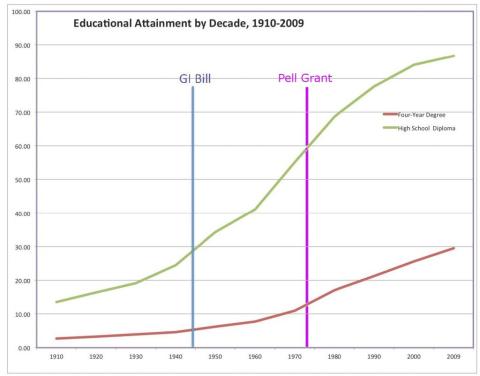“Before any great things are accomplished, a memorable change must be made in the system of education and knowledge must become so general as to raise the lower ranks of society nearer to the higher. The education of a nation instead of being confined to a few schools and universities for the instruction of the few, must become the national care and expense for the formation of the many.”—John Adams
America’s Founding Fathers were not the sort of men who agreed much. They disagreed passionately about many of the same things that we disagree about: religion, taxes, the balance of power between state and federal governments, and most of the other hot-button issues that have divided Americans for generations.
They all agreed, though, that America should not be governed by the British. And, they also agreed that we should not create the same kind of society that existed in Great Britain. In practice, this means they disdained the political institution of monarchy (the hereditary transfer of power) and the social institution of aristocracy (the hereditary transfer of privilege).
Their distaste for aristocracy, no doubt, explains their near universal support for education and their general agreement with John Adams’ belief that education, including higher education, “must become the national care and expense for the formation of the many.” Education was then, as it is now, the most powerful social equalizer.
Without broad access to education, they knew America would risk becoming a de facto version of the highly stratified nations of Europe, where wealthy families ensured that their children -- and nobody else’s -- would control most of the next generation’s wealth.
Fortunately, the Republic responded magnificently to its founding vision. Two of the Founders -- Benjamin Franklin and Thomas Jefferson -- went on to establish state universities. In 1859, Congress passed the Morrill Act (vetoed by Buchanan, but later signed by Lincoln) which lead to the creation of 76 land-grant universities in the United States.
In 1944, Roosevelt created the GI Bill, which almost instantly tripled the college-going population of the country. And, in 1965, we added the Pell Grant program, which nearly doubled access again.
Over time, we dramatically increased college graduation rates, which has driven a 700 percent increase in our adjusted-for-inflation GDP. But, we are still not where we need to be. Only 25 percent of Americans over the age of 25 have a college degree, a ratio that puts the long-term health of the economy in serious jeopardy.
Good social policy, it turns out, is good fiscal policy: both speak to the need to increase college-going rates.
When I wrote yesterday of the economic advantages incurred by keeping student loan rates low, several people wrote to me to let me know that, as they had personally paid for college themselves without any help from the government, they saw no reason why these kids today can’t do the same. Without exception, however, those who told me this attended state schools in the 1960s or 1970s — at a time when about 80 percent of the cost of their degree was subsidized by state governments.
This is no longer the case. Since the 1970s, state support of higher education has been cut in half and then cut in half again. Most states now support between 20 to 30 percent of the operating costs of their state’s institutions, which has lead to 1) dramatic increases in tuition and fees over the past 25 years; and 2) much of increased cost of education being picked up by the federal government in the form of grants and loans, with loans becoming more common over time.
What all of this means is that the student loan has now become the primary vehicle for accomplishing a goal Americans have had for more than 200 years, which is to democratize access to education. This is worth remembering.
It is also worth remembering that the higher interest rates are on those loans, the more we will discourage college attendance at the margins. And, it is precisely at the margins that education needs the most encouragement, lest we find ourselves creating precisely the kind of self-perpetuating, multi-generational aristocracy that America was founded not to be.
